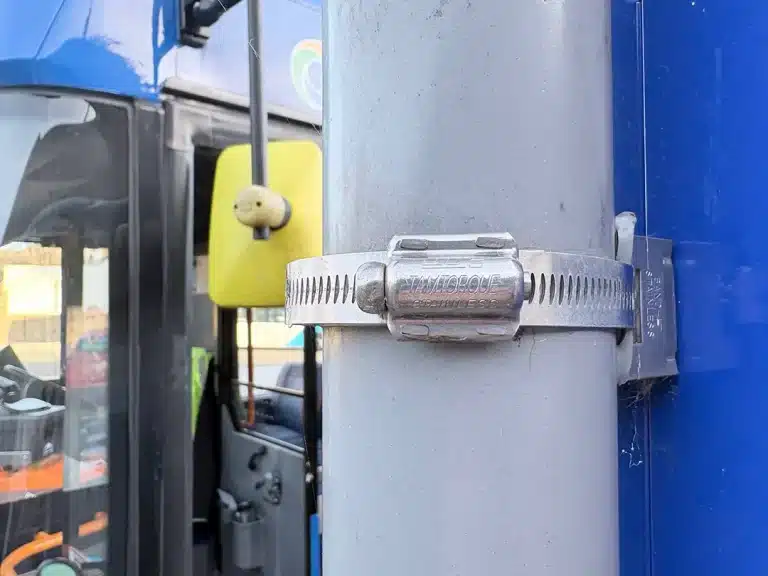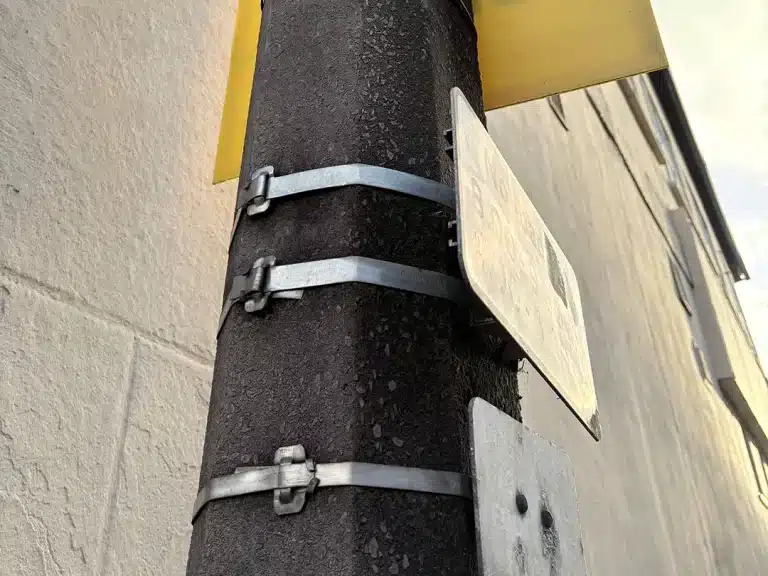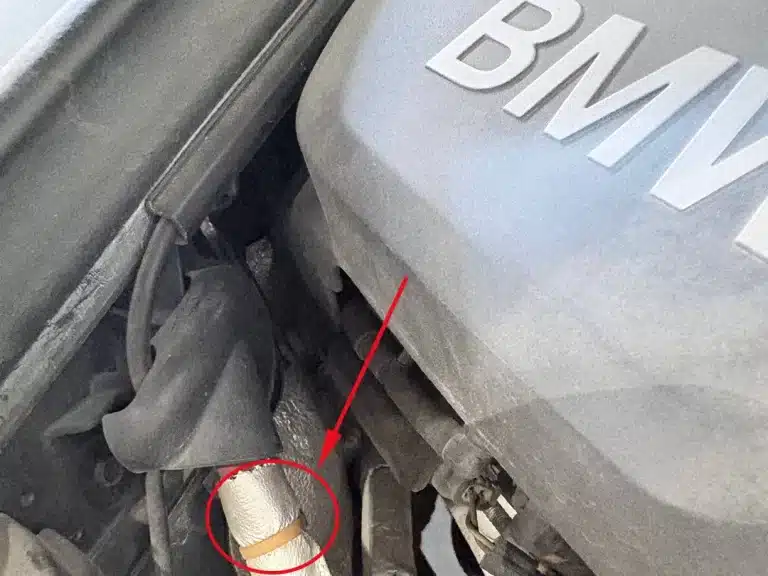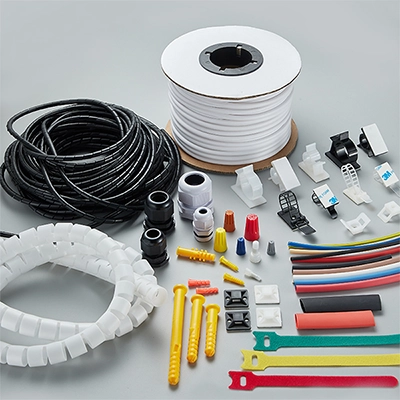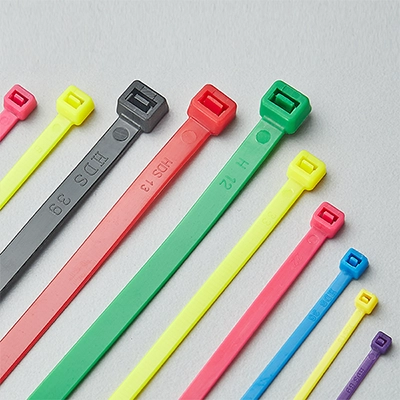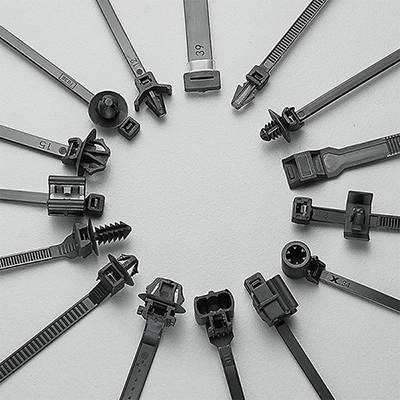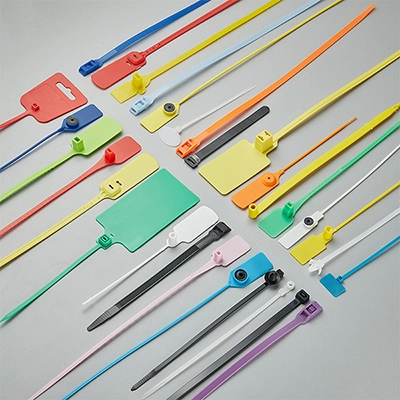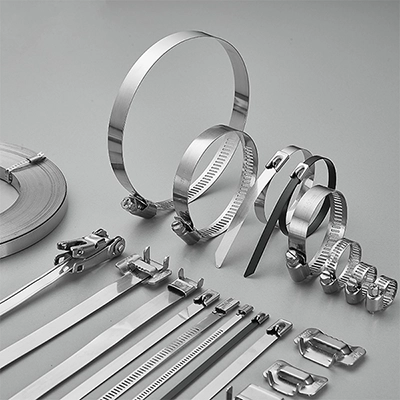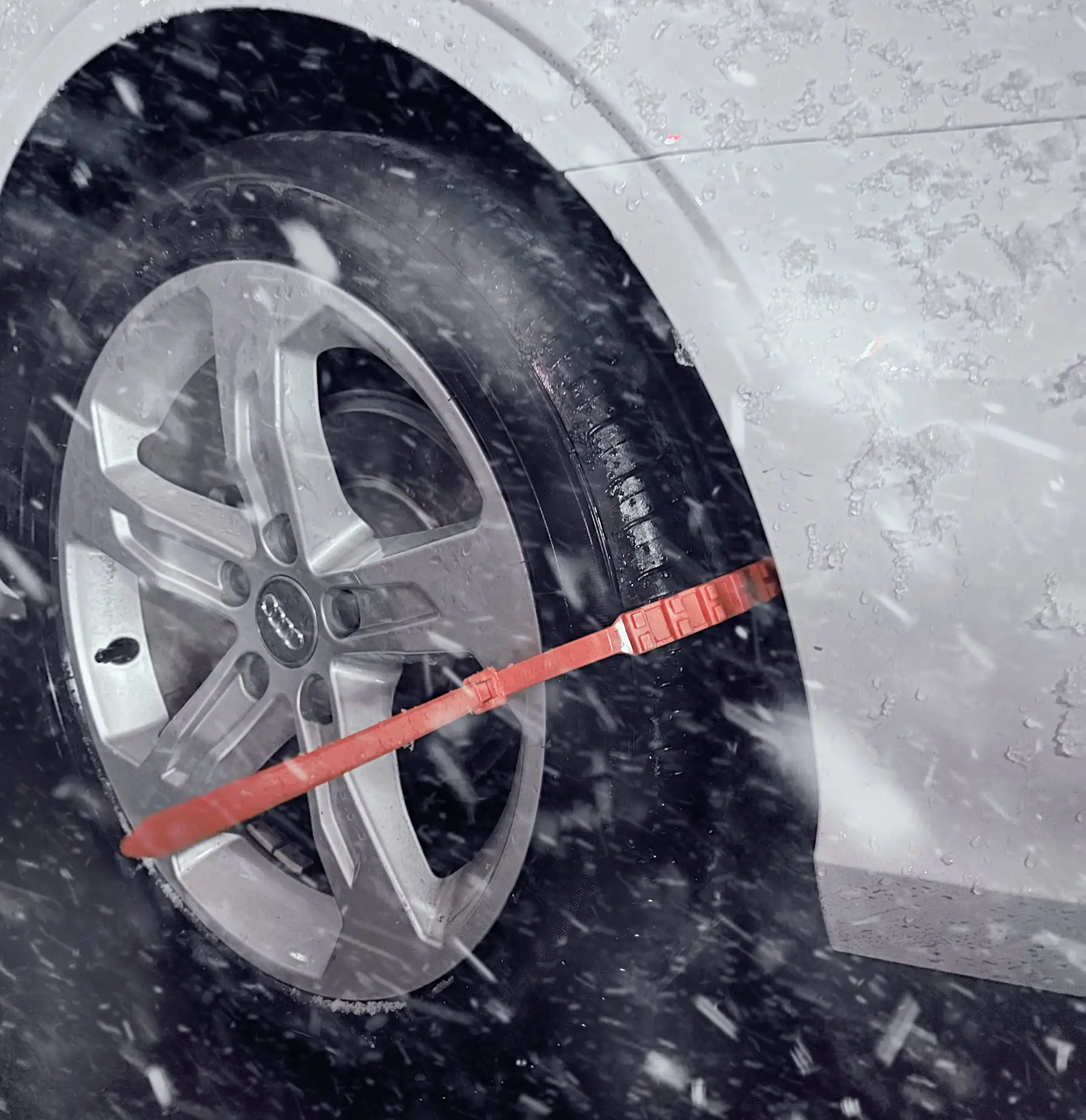
Using zip tie snow chains during snowy conditions is something quite familiar to people in colder regions. In the depths of winter, when snow covers the roads, they can become slippery, making regular tires prone to skidding and even losing control. In such scenarios, zip tie snow chains prove to be especially crucial. They offer a simple yet effective solution to enhance tire grip on snowy surfaces, thereby reducing the risk of accidents in slippery conditions.
What is Zip Tie Snow Chains
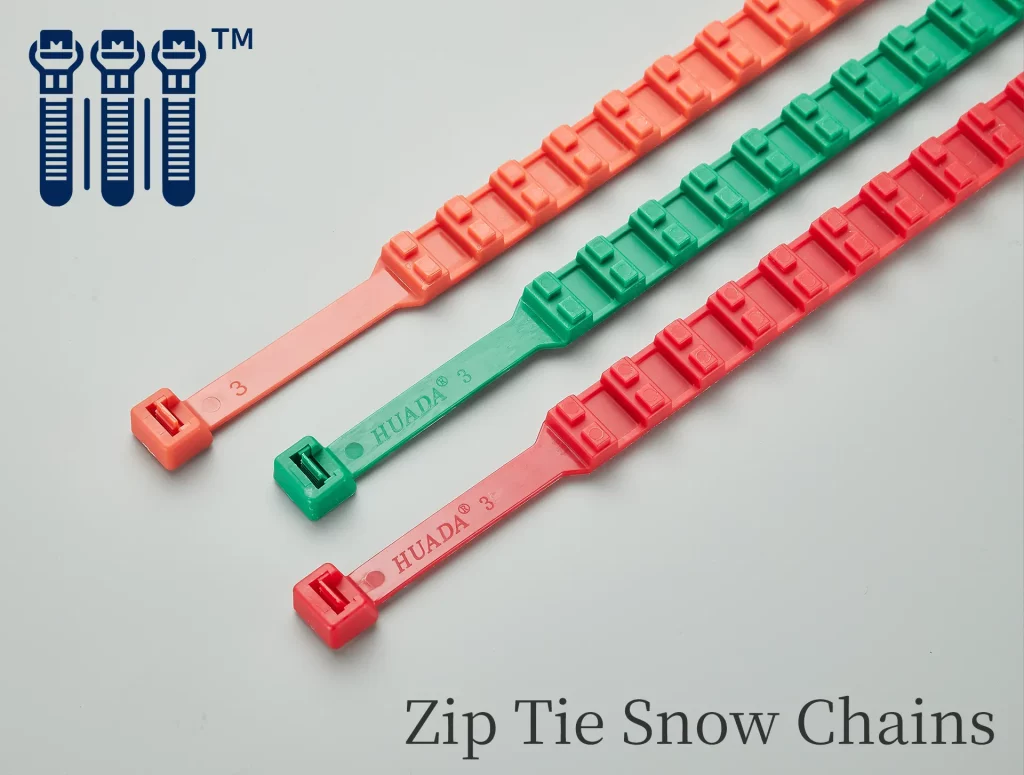
Zip tie snow chains, as the name suggests, are tools designed to prevent tire slippage and enhance the grip of car tires on the road surface. These zip ties are typically made from nylon 66, known for their high hardness and strength. Despite being nylon cable ties, when it comes to cutting off the excess part after installation, you’ll find them incredibly tough to break, often requiring a considerable amount of force.
Special Design of Zip Tie Snow Chains
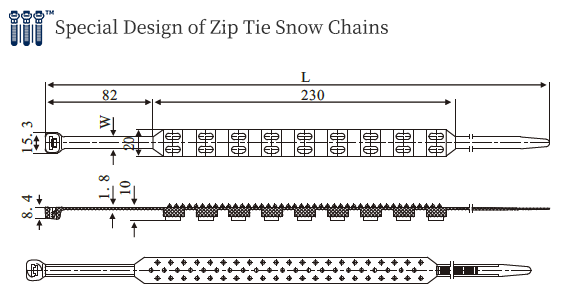
zip tie snow chains retain the advantages of traditional self-locking cable ties – they are easy to use and can be quickly operated without any tools. Added to this, the back of these zip ties features a row of protruding tooth-like structures, akin to small ‘teeth’. These meticulously designed protrusions create additional friction on the tire surface, significantly reducing the likelihood of the vehicle slipping on snowy, icy, or muddy roads.
The side of the zip tie that fits against the tire is also designed with pointed angles to increase friction between the tie and the tire, preventing movement or rotation. This clever integration of structure not only maintains the convenience of the zip ties but also greatly enhances their practicality and safety performance in adverse road conditions.
Installation and Use
The installation process is straightforward and can be referenced in the article “How to Use Zip Tie Snow Chains in 4 Steps” No specialized tools are required. The cable ties are fixed directly to the tire surface, ensuring that the ‘teeth’ are centrally distributed on the tire for optimal traction.
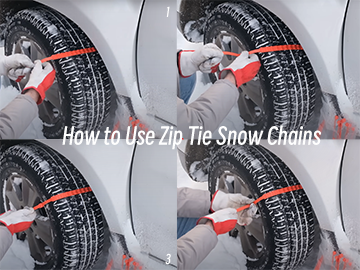
Applicable Vehicle Types and Cable Tie Specifications
Suitable for a variety of vehicles, including passenger cars, SUVs, and light trucks. However, it’s important to choose the right size to match the tires. We currently offer two sizes of zip tie snow chains:
| NK NO. | Length | Width(mm) | Max.Bundle DIA.(mm) | Min Tensile Strength | ||
| (lnch) | (mm) | (lb) | (kg) | |||
| NAT-FH12 | 35 | 920 | 12 | 265 | 175 | 80 |
| NAT-FH09 | 34 | 880 | 9 | 235 | 175 | 80 |
Advantages of Using Zip Tie Snow Chains

- Improved Safety: These zip ties enhance the tire’s grip, significantly reducing slippage and skidding on snowy or icy roads, thereby increasing driving safety.
- Easy Installation: Compared to traditional snow tires or chains, these cable ties are easier to install and remove, requiring no special tools or skills.
- Space and Cost Saving: These zip ties take up little space and are economical, usually more cost-effective than professional snow tires or metal chains.
- Wide Applicability: Suitable for various types of vehicles and tire sizes, offering a convenient anti-skid solution for all cars.
- Emergency Use: Ideal for drivers who rarely encounter snowy conditions or need additional traction occasionally.
- Less Damage to Tires: Compared to metal chains, plastic or fiber-made zip ties cause less damage to tires, and protect their lifespan.
Tips for Using Zip Tie Snow Chains
- Proper Installation: Ensure the zip ties are correctly installed on the tires. Refer to the article “How to Use Zip Tie Snow Chains in 4 Steps”
- Speed Control: When using zip ties, reduce speed. The recommended maximum speed is usually no more than 40 km/h, depending on actual road conditions.
- Use Only When Necessary: Apply the zip ties only in snowy, icy, or muddy conditions. Prolonged use on dry or regular surfaces may accelerate wear.
- Timely Removal: Remove the zip ties once road conditions improve to avoid unnecessary wear.
Conclusion
In summary, zip ties snow chains play a crucial role in navigating snowy and other slippery road conditions. Not only do they enhance driving safety and reduce the risk of accidents in adverse weather, but their ease of installation and use also make them indispensable tools for many drivers during the winter season.

